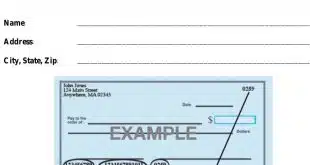Many studies have documented the rise of card, automated clearing house, and other forms of electronic payments, but a new one from Hitachi Consulting and the Bank Administration Institute sheds some light on just how consumers divide their payments behavior. According to the nationwide study of 3,308 consumers who completed an online survey in June, consumers now make 63% of their in-store, Internet, and bill-payment transactions by electronic means rather than by cash, checks, or money orders. That compares with 55% electronic and 45% paper in 2005, and 51% electronic and 49% paper in 2003, according to similar studies by Dove Consulting, which Dallas-based Hitachi Consulting acquired in 2005. The fortunes of paper and electronic methods varied widely among the major payment venues. Electronic payment forms naturally dominate the Internet?consumers in 2008 reported making 98% of their online purchases through electronic means, up from 94% in 2005 and 2003. Paper has a stronger, but weakening, hold in bill payments. The 2008 respondents reported they now make only 38% of their bill payments through paper-based systems compared with 62% for electronic. In 2005, 55% of respondents reported using checks, cash, and money orders for bill payments. But with many ostensibly electronic bill-pay systems still generating a paper check unbeknownst to the consumer, usually because the payee is unable to accept an electronic payment, the actual share of electronic bill-pay methods may not be as high as suggested by the 2008 results. “This study is based on consumer-reported data,” says Melissa Fox, senior manager in Hitachi Consulting's financial-services practice. “It's focused on the front end.” There's little doubt, however, that bill pay will become increasingly electronic. Based on responses to questions about their future (in the next two years) behavior, Hitachi predicts automated bill-pay transactions funded by demand-deposit, credit, or debit card accounts will grow 8%. Hitachi also predicts biller-direct transactions will rise 6% and bill-pay transactions through financial institutions will increase 4%. At the point of sale, electronic payments now capture 63% of transactions and paper 37% compared with 43% and 57%, respectively, in 1999. But debit cards may be taking a breather. After steadily growing in the 2001, 2003, and 2005 surveys, the number of consumers reporting having used a signature or PIN-debit card at least once a week for in-store purchases declined by a few percentage points in the 2008 survey. That seemingly contradicts other reports of high debit card growth in recent years, but it could be a blip rather than a major shift. Combined, PIN and signature debit cards now account for 37% of the Hitachi/BAI respondents' in-store transactions compared with 33% in 2005. “We did see the share of [debit] transactions increasing,” says Fox. “The basis of debit card users may be stabilizing.” And based on questions about consumers' future payment behavior, Hitachi predicts a 12% increase in signature debit transactions and 10% for PIN debit in stores. That compares with predicted net transaction declines of 3% for cash, 15% for checks, and 2% for credit cards. But Hitachi's respondents are easing off on gift and prepaid cards in stores, leading to a predicted 15% decline in usage in the next two years. Consumers 55 years old and older are turning away from prepaid cards the most, Fox says. Part of that shift may be the result of consumers becoming tapped out with closed-loop gift cards while the newer network-branded (Visa, MasterCard, American Express, and Discover) prepaid cards have yet to fill the gap. “I think the gift card market is very well-established and maybe some of the open-loop cards are slower to gain traction,” she says. Harris Interactive conducted the survey on behalf of Hitachi and the BAI. The survey had a sampling error of plus or minus 1.7% at the 95% confidence level. The sponsors were First Data Corp. and its Star EFT network, Harland Clarke, MasterCard Worldwide, Metavante, and the Pulse EFT network.
Check Also
Blockchain Token First Noted and other Digital Transactions News briefs from 3/25/25
Two U.S. banks, Custodia Bank and Vantage Bank, executed what they say is the country’s first …






